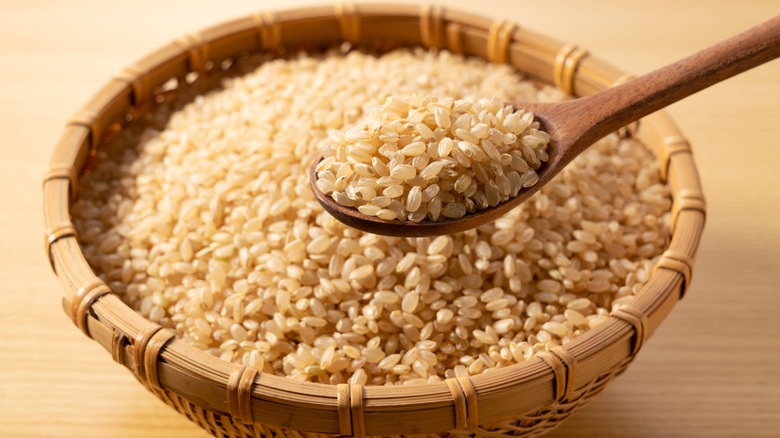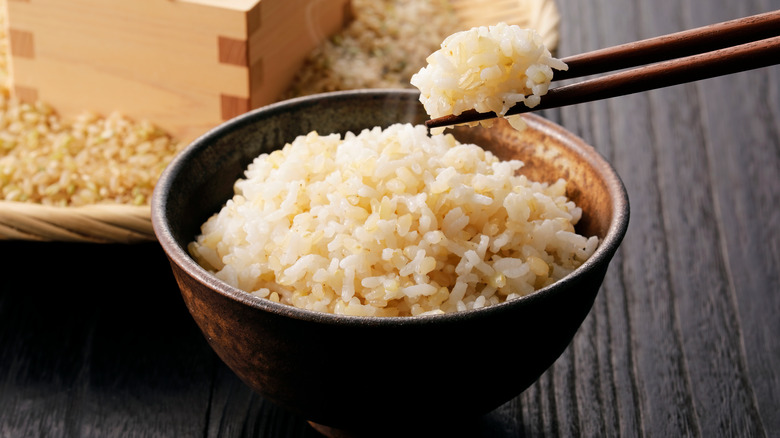The Reason Brown Rice Cooks Slower Than White Rice
Compared to white rice, there are a few benefits to eating brown rice that make it an enticing substitute. Besides the fats, B vitamins, iron, phosphorous, zinc, and potassium found in white rice, brown rice delivers where white rice lacks — serving 3.5 grams of fiber, compared to the 0.6 grams of white rice, and 0.8 more grams of protein per cup (via Food Network). However, many recipes lead you astray by forgetting to note that brown rice cooks slower than white rice, leaving you with a pot of undercooked grains.
A perfect pot of rice will be steamy, soft, and fluffy, with a mouthfeel that detects each singular grain, depending on the type of rice you make. So it's safe to say that it can be pretty disappointing when your brown rice comes out firm, flat, and undercooked — especially when you're ready to eat. However, there's an explanation for why your brown rice doesn't cook as quickly as white rice, and it has to do with the very reason it's more nutritionally beneficial in the first place: It's a whole grain.
The bran
Unlike white rice, brown rice contains all parts of the grain, including the germ and the bran. While the germ provides brown rice with its nutritious vitamins (via Harvard School of Public Health), Food Network says that the bran is the part of the grain that is responsible for its fiber content, brown color, and, as it turns out, its longer cooking time. The fibrous and antioxidant-rich (via Healthline) bran is found within the grain's shell or husk.
Because the husk of white rice is removed during milling, it produces softer rice that cooks quickly. But, brown rice contains the grain's husk, and although it's packed with benefits, it also acts as a shell that makes it harder to cook the inside of the rice. This results in longer cook times: up to 75 minutes for short grains, 30 minutes for medium and long grains, and 12-14 for basmati, according to Recipe Tin Eats. So even though it might take longer, you can enjoy brown rice as a substitute in your favorite fried rice recipe to add fiber and a little extra protein when you have the extra time.

